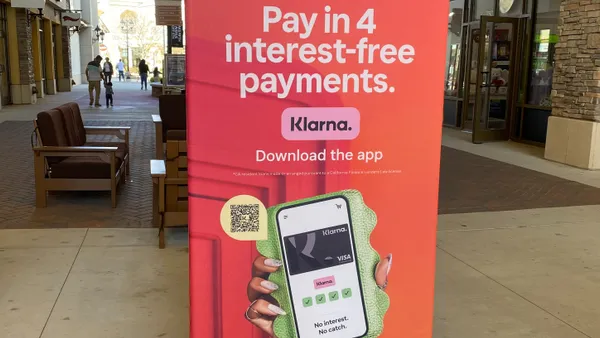Players in the payments space are increasingly looking to artificial intelligence to make the process of paying for goods and services safer, faster and more efficient.
The emerging technology can help payments companies find ways to improve transactions by quickly analyzing massive amounts of data, said Davi Strazza, president of North America for Amsterdam-based payments financial technology platform Adyen.
The financial technology company has a roster of clients that includes big-name corporations like Microsoft, Uber, Etsy and McDonald’s.
Adyen recently unveiled Uplift, an AI program designed to help its merchant clients increase payment conversion rates and reduce fraud.
Strazza talked about how his company is using the emerging technology to make the payment process faster and more secure in a Jan. 10 interview.
Editor’s note: This interview has been edited for clarity and brevity.
Payments Dive: Why is artificial intelligence important for the payments industry?
Davi Strazza: Payments is a very nuanced industry and there's several different layers to it. We talk all day long about how Adyen abstracts that complexity and cuts the corners and goes directly to the source of funds. Over the last few years, we have spent a lot of time investing in leveraging technology to make sense of all of that data and start to tailor recommendations for our customers in terms of what performs best.
In my understanding, artificial intelligence is used in payments to simplify the payment process and make it more efficient. Is that thinking correct?
Simplification and efficiency is one aspect of it. But let me give you another example. Let's say you are a sneakerhead. You really love sneakers, and you buy a pair of sneakers every month. The challenge with the store transactions is you don't leave an email behind. You don't leave the phone behind. There's no track record. And now, for whatever reason, it's a rainy day, so you shop online. You create a profile online and you go through the process of making that first [digital] transaction. The average retail business in the U.S. will take you as a first time shopper, and the risk management on that transaction will be applied accordingly. As in, you're not a trusted shopper. What we can do is, even before you provide details, we can essentially mark that transaction as a trusted transaction because you've been shopping in the store for so long. And then we fast-track that through approval, not only in our systems when it comes to fraud prevention, but then we also inform the issuer, ‘Hey, this is a trusted shopper.’
Can you go into a little bit more detail about the role artificial intelligence plays in the payments process?
Anytime someone talks about AI, the first thing that most consumers think about is ChatGPT. This is not that. For every transaction that comes in, we are taking every single data point, and we are packaging those data points in terms of patterns, in terms of best routes, in terms of what performs best, and what comes in with more risk. You can adjust those parameters, but as the data comes in, we're using the models that we train in house to take that data in and get smarter and smarter in terms of ‘what should I do next time a transaction with a similar profile comes in?’ The fundamental way the chatbots work is essentially prediction. You give them a sentence or a question, they predict what the next word should be. At Adyen, every time a transaction comes in, we built the ability to predict what the best next step should be. We did that by training our models on over trillion dollars worth of transaction data.
If I’m hearing you correctly, this is all about keeping payment conversion rates up?
Right. We up conversion rates for customers, and in some cases, depending on their strategy, it could also decrease their cost of payments. We route transactions, when it's possible, to the card scheme that offers the least cost to that customer.
I'm sure you've seen news stories about AI fabricating things and making mistakes. How do you make sure that that kind of thing doesn't happen in these cases?
When it comes to text and open-ended questions and the random things that an average human will put in these [AI] chat bots, there's a lot of room for hallucination. There's a lot of gray zones. On the payment side, it's much more black and white, because we're not talking about history, we're not talking about interpretation. A transaction is authorized, or it's not. A transaction has a card with a history of fraud, or it doesn’t. The vast majority of our data is structured, rigid. That helps us make sure that when the vast majority of the recommendations are made, they are the right recommendations.
So it’s different because you’re not asking it to write an essay or a cover letter, you’re asking it to analyze numbers and patterns?
Exactly, there’s a lot less room for hallucinations.













